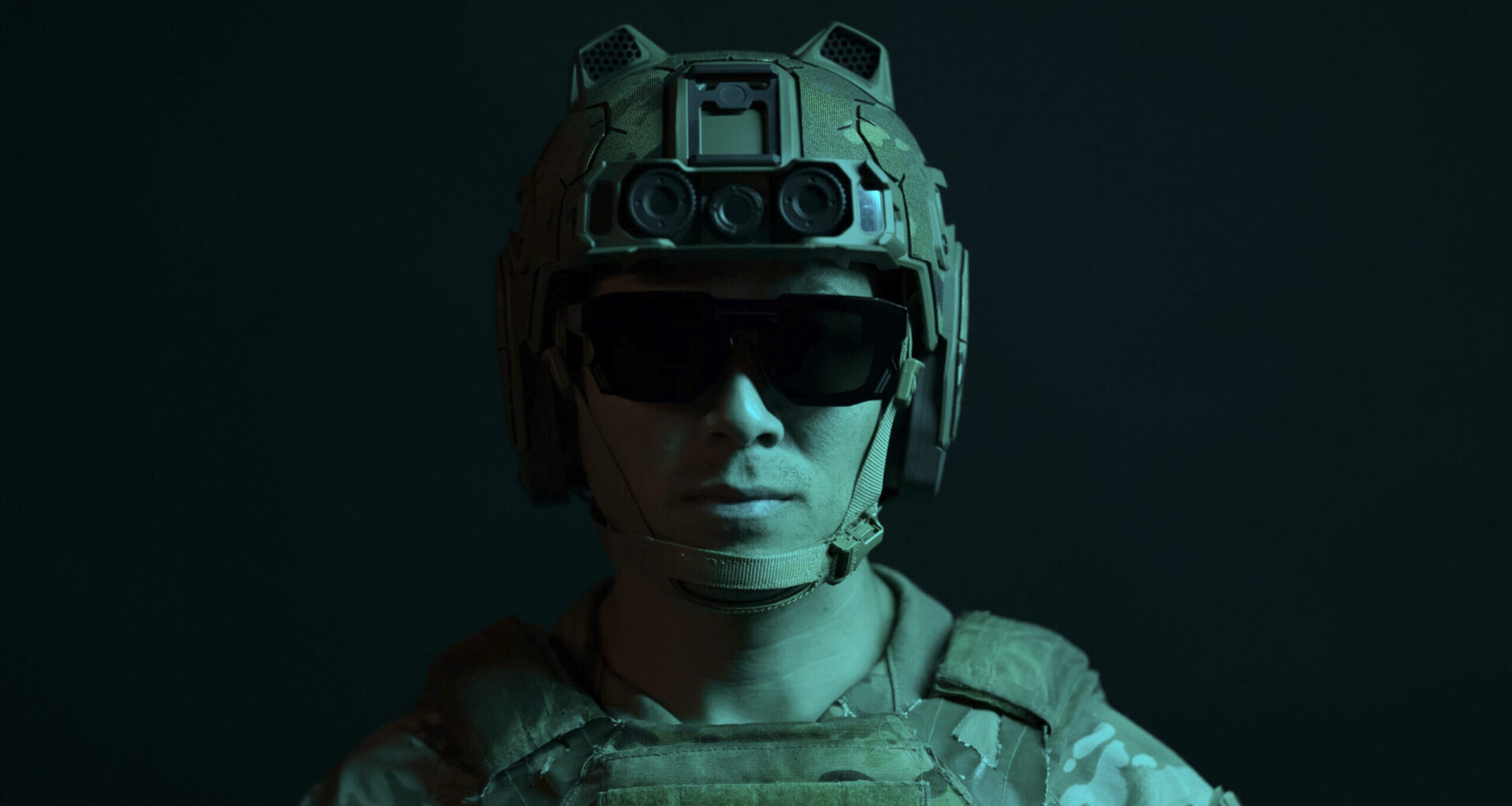AUSA 2025 — Anduril is unveiling EagleEye — its new line of mixed-reality, heads-up displays — in Washington this week, as it works to secure a production deal with the Army for its follow on Integrated Visual Augmentation System (IVAS) program.
“I have got this shit figured out. … I’ve done this before. I’ve done it more or less perfectly,” Anduril founder Palmer Luckey told reporters last week when asked how EagleEye will mitigate past concerns about instances of cyber sickness among soldiers using the Army’s prior IVAS prototypes.
“Its very clear that we are going to have to … save the day on this,” he said separately. “And I’m very happy that it seems to all be panning out.”
Luckey has been teasing EagleEye for quite some time and has now snagged one of two development contracts with the Army. The company, he explained, is actually working on four EagleEye variants, all in various stages of development. That includes an 80g (2.8 oz) Oakley standard issue glasses design, as well as a ballistic, full-face shield option that is being designed in-house.
Two such EagleEye variants will be on display for the first time this week at the Association of the US Army’s annual conference, along with a new company product line — body armor.
“EagleEye is less one product, and it’s more a platform that other people can build products on top of,” he said, explaining that the lighter glasses could be used by soldiers working in logistics roles, while the full-face shield could be better suited for soldiers on the frontlines.
“The full-face ballistic shield fully encapsulates your head to protect primarily [from] blast force,” Luckey said. “Now, that’s a much wider field display. It’s over 200-degrees wide and over 100-degrees tall. It’s a very different display system that’s more like a night vision pass through system. It’s not optically transparent. It’s a full reprojection system.”
While initial EagleEye prototypes for the Army will use the existing Integrated Head Protection System helmet, Luckey said that helmet is not ideal for a mixed-reality heads-up display, in part because they are designed to have rotational slip to help protect soldiers’ heads. That rotational slip is a challenge when it comes to keeping the device in place, so the company is working on a new helmet design.
A new ballistic plate is also being designed to protect a soldier’s chest and lighten the load when the EagleEye computer, battery and radio are added in.
“What we’re trying to do is integrate those all into one piece that is lighter, lower profile than all those things combined,” he said.
“It’s not … the highest performing battery in the world, nor is the highest performing armor in the world,” he added. “However, it’s still much higher performance when you use it to do both of those things than if you were to do them completely separately.”
Plotting The Course
Luckey has been eyeing his entrance into IVAS/Soldier-Borne Mission Command (SBMC) space for years. After rising to prominence with the development of the civilian Oculus augmented reality headset, he eventually sold that company and device to Facebook (now Meta) in 2014 and had well-documented political fallouts with people inside the company, including CEO Mark Zuckerberg.
As Luckey set out to stand up Anduril around 2017, he reached out to investors pitching the design of tactical augmented reality displays.
“My investors at the time told me that … I could not put all of our cards or our eggs in that basket because they believed that it was an extension of a pissing contest I had with Mark Zuckerberg as to how to build the best augmented reality glasses. They were somewhat right,” Luckey said.
Around this time, the Army ramped up its search for a virtual reality heads up display that soldiers could use for training and in combat, including under the cover of darkness. In 2018, it picked Microsoft’s commercially available HoloLens 2 heads-up display for the IVAS program and eventually awarded the company a 10-year, $22 billion production deal.
However, the device was plagued with problems that ranged from soldiers complaining of cyber sickness symptoms like nausea and visual discomfort to software glitches. After several fits and starts, and redesigns, the service moved ahead with a plan to recompete the hardware earlier this year and officially asked industry to submit viable options for the SBMC competition.
In the meantime, Luckey said last week that he had been preparing for this moment — working on EagleEye for two-and-a-half years, and already integrating Anduril’s Lattice platform into the Microsoft-designed device.
Then in April, with a competition on the horizon, Anduril officially assumed oversight of the original multi-billion-dollar IVAS production deal, which is expected to home in on the data architecture.
Luckey, around that time, also made a play to claw back all the intellectual property from Meta and struck up a partnership between the two companies.
“I now have all my toys back,” he said. “So everything that I did before I sold the company, everything I did while I was at Meta, and everything that they did afterwards. All of it is on the table for EagleEye.”
In September, the Army tapped Anduril and the startup firm Rivet to proceed with the IVAS redo for the hardware component of the system.
Based on photos on its website, Rivet’s design closely resembles glasses. At the time of the contract award, Rivet CEO David Marra said his company signed a $195 million contract with the Army that will cover an 18-month rapid prototyping sprint. Those dollars, he said, will be used to continue engineering and testing work, and the production of 470 “production representative” devices.
Anduril, meanwhile, said it received a $159 million contract for initial prototyping, with plans to begin delivering close to 100 units in the April-June 2026 timeframe.

